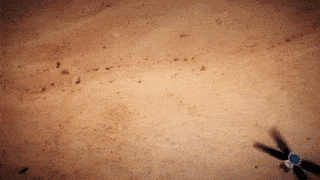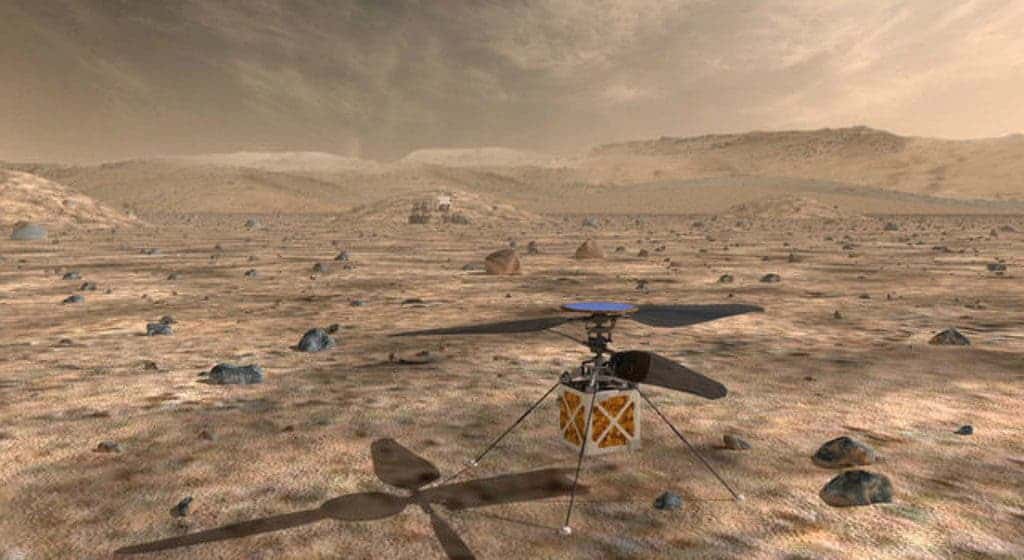
It’s an amazing time to be alive. Consider this: humans have sent a man-made spacecraft around each and every planet in the solar system, as well as some of their moons. Although billions of miles might separate Earth from other planets in the solar system, and despite everything being in motion, we’ve managed this extraordinary feat.
No other planet has been more visited by our contraptions than Mars. We’ve sent orbiters, landers, and even 4×4 labs on wheels to the Red Planet. Now, for the first time, NASA wants to send a helicopter to Mars, which is meant to fly in very rarefied Martian atmosphere.
“Exploring the Red Planet with NASA’s Mars Helicopter exemplifies a successful marriage of science and technology innovation and is a unique opportunity to advance Mars exploration for the future,” said Thomas Zurbuchen, Associate Administrator for NASA’s Science Mission Directorate at the agency headquarters in Washington. “After the Wright Brothers proved 117 years ago that powered, sustained, and controlled flight was possible here on Earth, another group of American pioneers may prove the same can be done on another world.”
The little helicopter measures just one-meter long in rotor diameter, and its body is about the size of a small cat. It took four years of testing and tweaking to make the first prototype of the Mars-bound helicopter.
One of the biggest challenges was figuring out how to build a helicopter that can fly in an atmosphere that’s about a thousand times thinner than on Earth. Just imagine that hovering just 10 feet (3 m) above the Martian surface is like soaring at 100,000 feet (30,000 m) above Earth. The highest a helicopter has ever flown is 40,000 feet (12,000 m), where the air becomes too thin to keep helicopters aloft.
“To make it fly at that low atmospheric density, we had to scrutinize everything, make it as light as possible while being as strong and as powerful as it can possibly be,” said Mimi Aung, Mars Helicopter project manager at NASA’s Jet Propulsion Laboratory.
The Martian helicopter also features another innovation: it’s powered by solar cells that charge lithium batteries. Meanwhile, internal heating mechanisms will keep the flying machine warm through the frigid Martian night.

Because it takes at least four minutes for light to travel to Mars from Earth (a delay that can grow to half an hour depending on how far the two planets are relative to each other), remote controlling the helicopter is out of the question. Instead, the machine is designed to receive pre-programmed commands from Earth, then execute them on its own, always autonomously navigating the environment in real-time.
The Mars Helicopter is expected to touch down on the Martian surface in February 2021, piggybacking a car-sized rover — a bigger, upgraded version of the Curiosity rover. After the rover lands on the Martian surface, the rotorcraft will detach and take off. Its first flight is intended to be short: just a 10-foot climb for 30 seconds before returning to the ground. If this initial test works well, the craft is supposed to make four more flights over a 30-day test period, with each flight getting progressively longer and more complex than the previous. If this little helicopter works as intended, it will set the stage for future, more complex rotorcrafts designed to act as scouts that can explore and map regions of Mars where scientists can’t even dream to send a rover.
“The ability to see clearly what lies beyond the next hill is crucial for future explorers,” said Zurbuchen. “We already have great views of Mars from the surface as well as from orbit. With the added dimension of a bird’s-eye view from a ‘marscopter,’ we can only imagine what future missions will achieve.”






